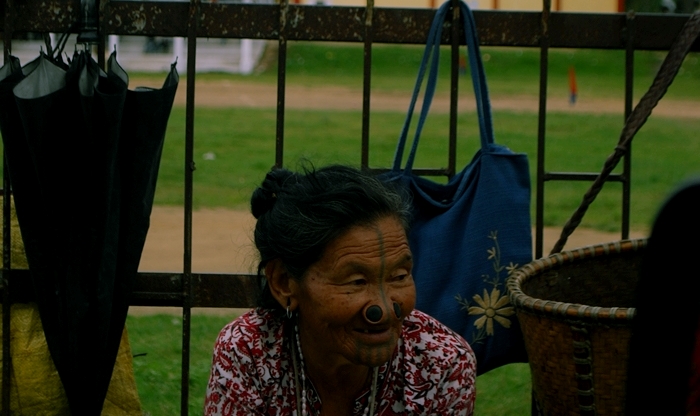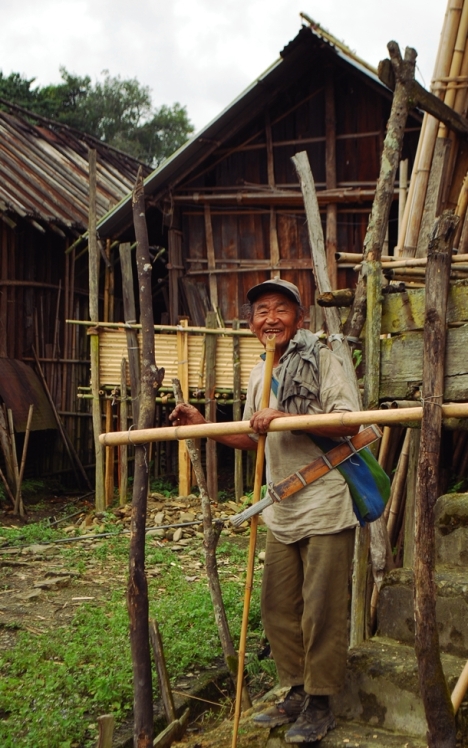We are all rooted from an ancestral history – a history that we can’t deny, and a history that is worth to be proud of. Even in today’s modern world, which has come far from the past once known, there can be found people who still maintain their traditional history and remain proud of it. One such example is the Apatani Tribe of Arunachal Pradesh. Blessed with beautiful traditions, culture and history, the Apatanis have till now been successful in maintaining a balance with the changing world.
With a total population of about 30,000 people, the majority of the tribe are permanently settled in the Ziro Valley in central Arunachal Pradesh, living in sustainable villages made from wood and bamboo. It is an amazing places, blessed abundantly with the serene nature of mountains, valleys, rivers and rainforests of the remote eastern Himalayas. Apparently, the Apatani people enjoy this nature and have no plan to leave. The tribe practices a democratic system. Though men in the tribe are superior to women, both father and mother work hand-in-hand to share responsibilities. During the savage days that existed in Arunachal Pradesh till the middle nineties, the women of the tribe; who are considered to be the most beautiful in the eastern Himalayas, were often stolen by invading parties of other tribes due to their beauty. This led to a unique tradition where the Apatani men started to tattoo their women and made them wear large nose plugs, called as yaping hurlo, in order to make them appear unattractive. Though the tradition is no longer followed by the younger generation, even today one can find many of the older women around Ziro following the tradition.

The religion practiced faithfully by the Apatani Tribe is Donyi-Polo, the praise of the Sun (Ayo Donyi) and the Moon (Atoh Polo). Misfortunes and bad luck in anyway are believed to be caused by evil spirits. For this, the Apatanis render a quite prayer to Ayo Donyi and Atoh Polo by sacrificing domestic such as chicken or mithun, a semi-domesticated type of bison unique to the eastern Himalayas. Festivities in the tribe are indeed very crucial and sacred to every Apatani. In March, the tribe celebrates Myoko where the Apatanis give thanks to friendship and pray for prosperity to their gods and goddesses in the form of miji where priests perform religious chanting. In July, Apatanis from around the world try to come together to celebrate their main agricultural festival known as the Dree Festival, during which sacrificing of fowls, eggs, and animals to the benevolent gods is involved. It is a belief that the sacrifices, chants dances and rituals please the gods; thus, granting the Apatanis with prosperity throughout the year. Daminda and Pakhu Ittu dances are two popular dances of the tribe. The festivals of the Apatani Tribe are quite popular among travelers seeking offbeat cultures, who come to observe the colorful dances, traditional attires and animistic ceremonies. From our experience, all of them leave intoxicated by the tribal hospitality, hefty drinking, unending feasts and merrymaking that occurs during the festivals.
The traditional dresses of the Apatani Tribe display uniqueness, colors and simplicity. People visiting the Ziro Valley often end up buying many of tribe’s attires, ornaments and crafts due to the precision and beauty of these items.

Another unique aspect of the Apatani Tribe is their way of cultivating land and soil. The tribe values the gifts of nature and utilizes every size of land while maintaining an ecological balance. An example is the vast farmlands of the Ziro Valley where the tribe practices wet rice cultivation, choosing to permanently settle rather than live a nomadic lifestyle that comes with slash-and-burn type cultivation. This type of cultivation is unique to the Apatanis and other tribes of the region have often pondered upon the question of how the Apatanis achieve it. Taking the sustainability of their fields a step further, the tribe also harvests fish in the wet fields alongside rice. This instantly doubles the food production of their fields. Astonishingly, increasing their food production even further, the Apatanis also cultivate within their fields a unique type of salt called tapyo, which not only is an alternate to sodium chloride, it also helps in goiter prevention. While the majority of the tribe practices agriculture, the others are engaged in poultry, hunting and fishing. And maintaining a balance with the changing world, some have also chosen to become government leaders, employees, doctors, engineers and other modern professionals.

Ziro is a bustling town where it is easy to observe the tribe’s genuine love and respect for nature. The Apatanis are a simple bunch of a human colony. Hardworking, honest and skillful, they have managed to become one of the most prosperous tribes of the region and have managed to earn the respect of everyone who has interacted with them.
Tribes of Central Arunachal Pradesh is our fascinating tour dealing with various tribes of Arunachal Pradesh, including the Apatani.

4 responses to “The Apatani Tribe of Arunachal Pradesh – Sustainable Simplicity”
Wonderful post on Apatani tribe.
http://rajniranjandas.blogspot.in/2013/02/colours-of-maha-kumbh-mela.html
Wow. So much info. When I go to visit the tribes someday, maybe…
Good write-up, except the wrong version of the origin of tattoo and nose plugs. For the correct one, please see: http://ziminziro.blogspot.in/2013/03/of-nose-plugs-and-tattoo-of-apatanis.html
And you wonder why Ziro is so perfect.